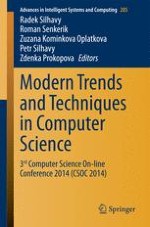This book is based on the research papers presented in the 3rd Computer Science On-line Conference 2014 (CSOC 2014).
The conference is intended to provide an international forum for discussions on the latest high-quality research results in all areas related to Computer Science. The topics addressed are the theoretical aspects and applications of Artificial Intelligences, Computer Science, Informatics and Software Engineering.
The authors provide new approaches and methods to real-world problems, and in particular, exploratory research that describes novel approaches in their field. Particular emphasis is laid on modern trends in selected fields of interest. New algorithms or methods in a variety of fields are also presented.
This book is divided into three sections and covers topics including Artificial Intelligence, Computer Science and Software Engineering. Each section consists of new theoretical contributions and applications which can be used for the further development of knowledge of everybody who is looking for new knowledge or new inspiration for further research.
